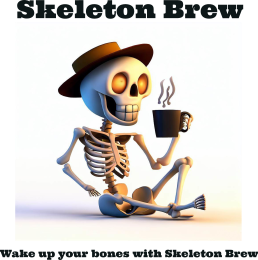Welcome back to our “Coffee 101” series! Today, we’re exploring a hot topic that’s essential to brewing the perfect cup of coffee: temperature. The right heat can make or break your brew, influencing its taste, aroma, and overall quality. Let’s see how.

The Science of Heat in Coffee Brewing
The magic of coffee brewing lies in the interaction between water and coffee grounds. The temperature of the water is crucial because it dictates the extraction of flavors, acids, and oils from the coffee grounds.
-
195°F to 205°F (90°C to 96°C): Experts agree this temperature range is ideal. It extracts a harmonious balance of flavors and acids, giving you a rich, aromatic, and satisfying cup without bitterness.
-
Below 195°F (90°C): Water at this temperature leads to under-extraction, producing coffee that may taste weak, sour, and flat. However, it’s worth noting that for making cold brew coffee, where water isn’t heated at all, the long extraction time compensates, resulting in a smooth, mellow brew.
-
Above 205°F (96°C): Water hotter than this risks over-extraction, pulling out too many bitter compounds and resulting in a coffee that tastes harsh and overbearing.
Finding the Sweet Spot
Identifying the perfect brewing temperature can unlock your coffee’s potential, highlighting its unique flavors. Here’s how to find and leverage this sweet spot:
-
Start with Quality Beans: Good coffee starts with good beans. Opt for high-quality, freshly roasted beans from our selection at Skeleton Brew to ensure the best taste.
-
Measure and Monitor: Use a thermometer to measure your water temperature accurately. Being consistent is crucial for brewing coffee that’s perfect every time.
-
Utilize Modern Coffee Makers: Most coffee makers today are designed to operate within the ideal temperature range, using a proper drip grind. For many, this is a simple and effective way to achieve great coffee without the guesswork.
-
Opt for Programmable Electric Kettles: For those who prefer pour overs or French Presses, a kettle with programmable temperature settings is invaluable. It allows for precise control over the water temperature, ensuring you hit the sweet spot every time.
-
Experiment: Start at the lower end of the optimal range and adjust upwards in small increments. Note how slight changes in temperature affect the taste and body of your coffee.
-
Taste and Adjust: Observe the changes in acidity, body, and flavor as you tweak the temperature. Lighter roasts may excel at slightly higher temperatures, while darker roasts could be more suited to the lower end of the spectrum.
Final Thoughts
Mastering the impact of temperature on coffee brewing can elevate your coffee experience from ordinary to extraordinary. Remember, the grind size, brew method, and water quality are also key players in the quest for the perfect cup.
We invite you to experiment with your brew’s temperature and share your discoveries. Have you found the ideal setting for your beloved Skeleton Brew coffee? Share your findings and join the conversation below or through our social media channels. Here’s to brewing the perfect cup, one temperature tweak at a time!
